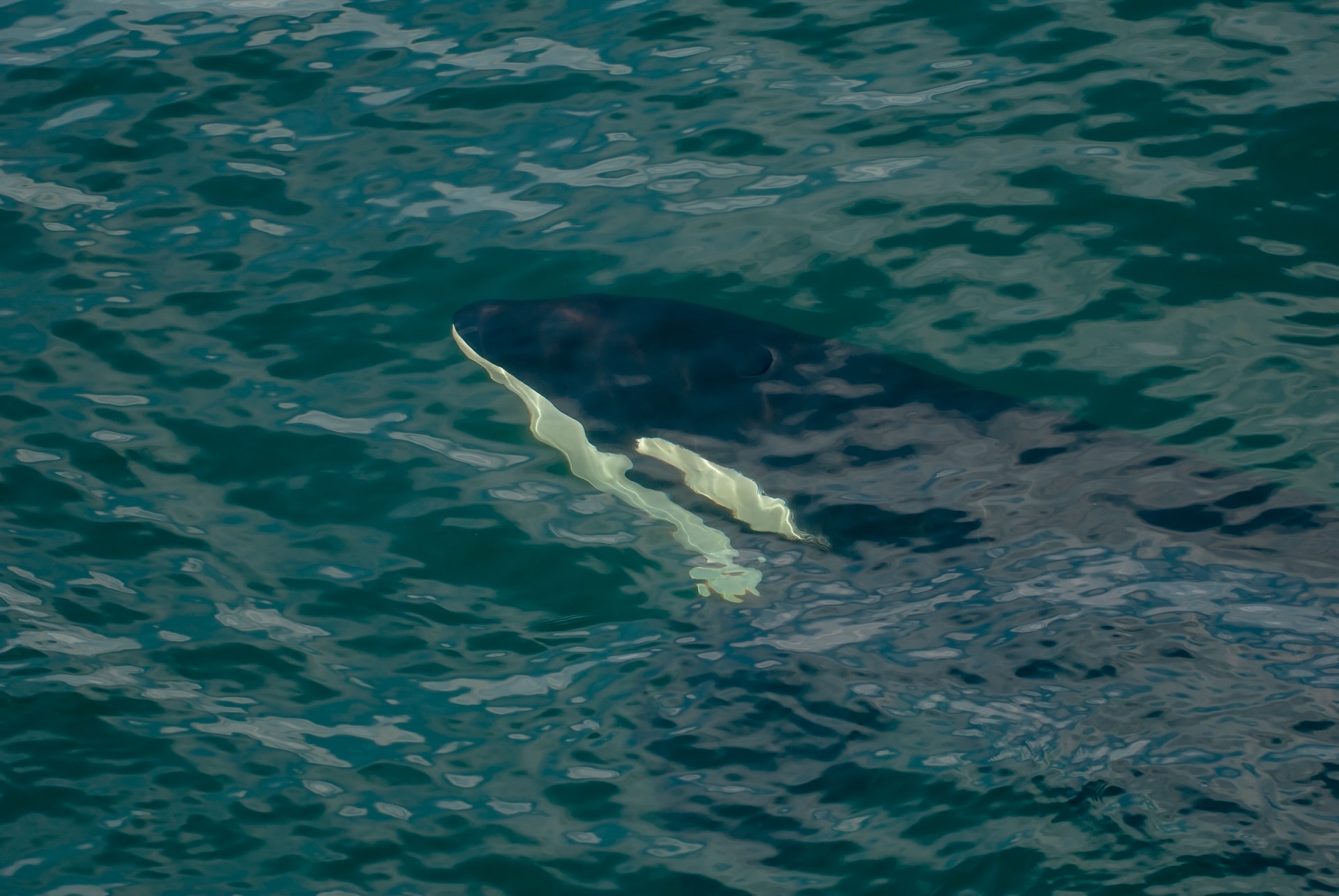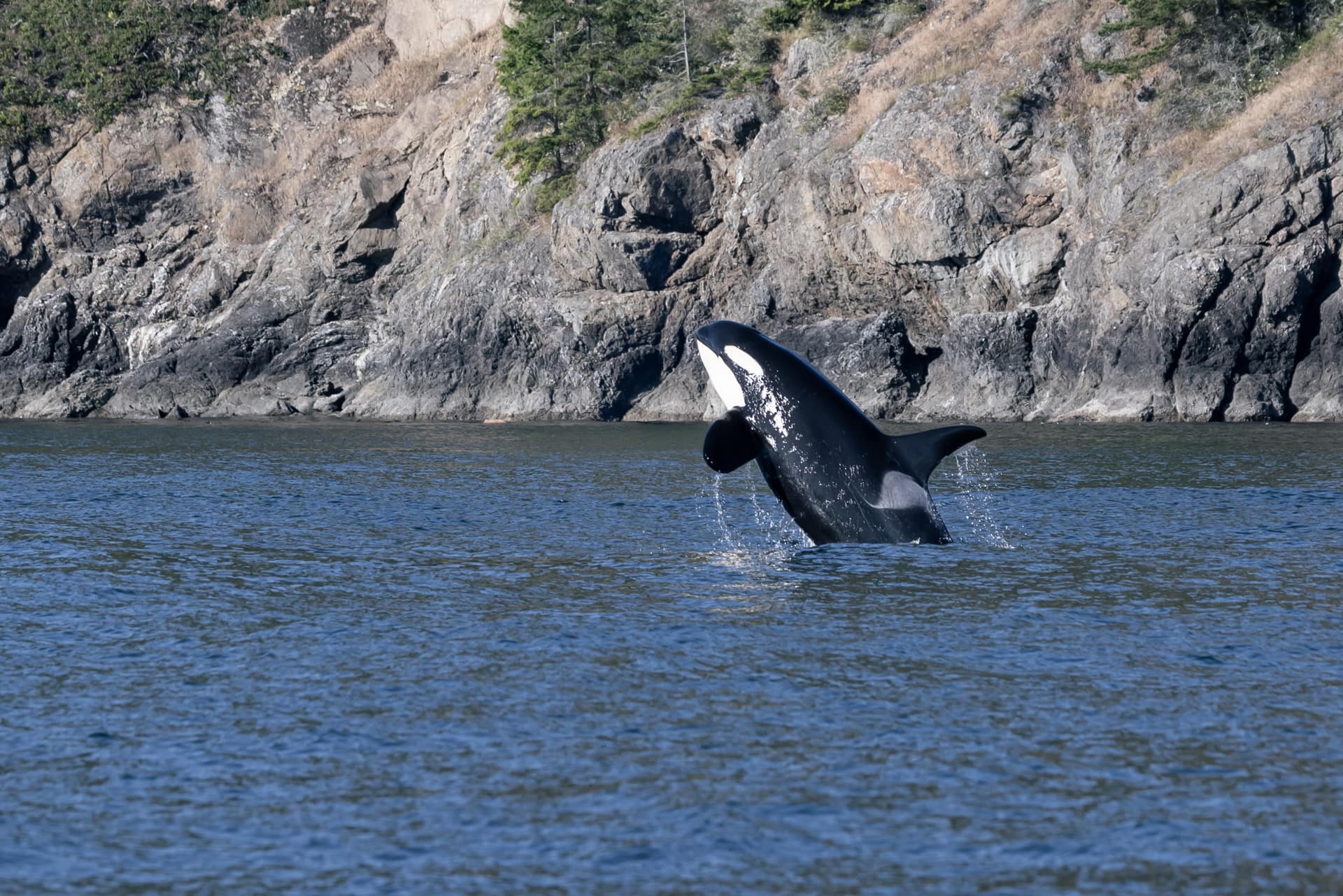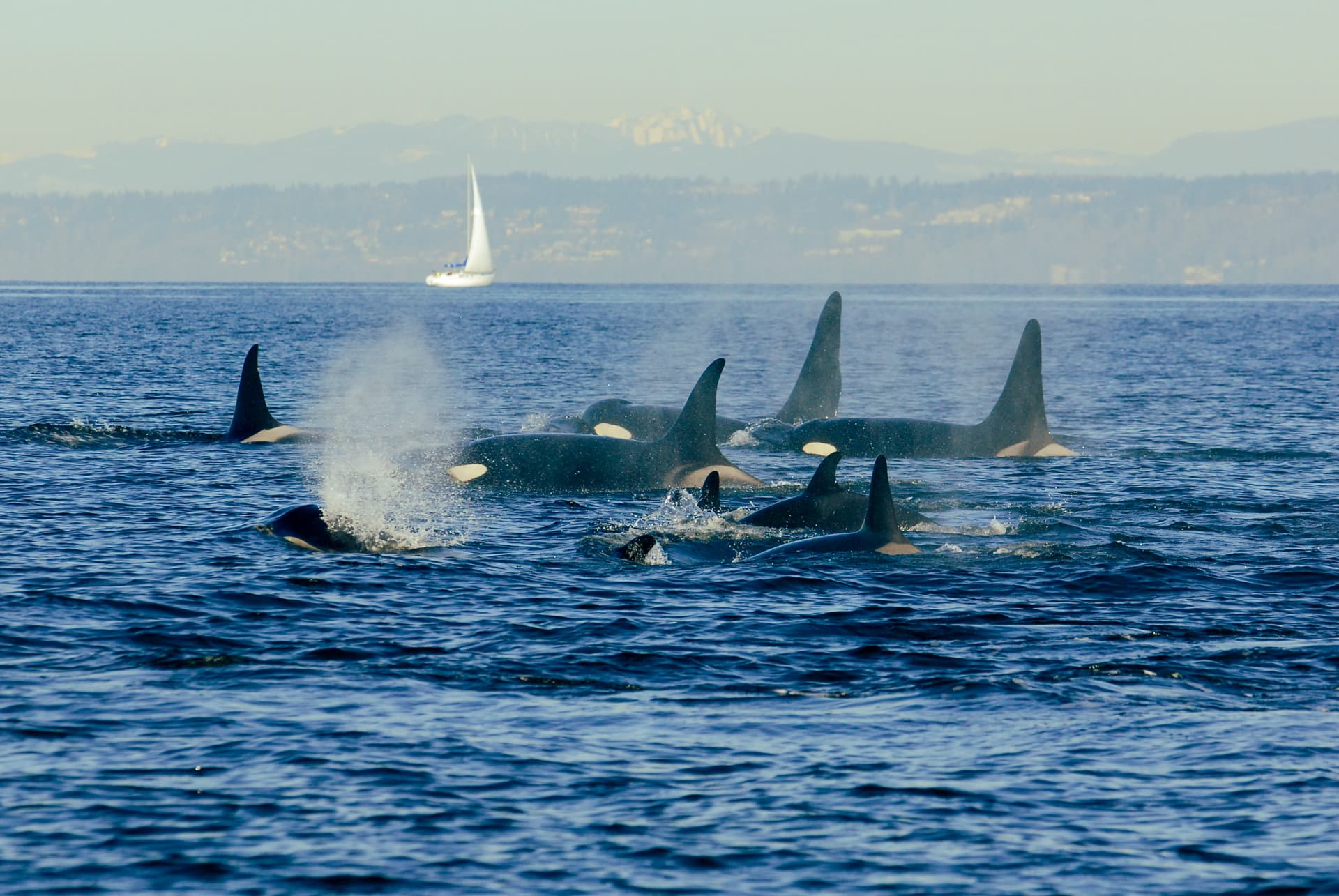
When the Southern Resident killer whales were added to the Endangered Species list in 2005, their Salish Sea habitat was recognized as critical to their survival. Yet, they also forage in the coastal waters from Washington to California, but their travels here were less studied. Often out of sight of land, at-sea observations by ship and aerial survey had limited success, especially in poor weather.
So between 2008 and 2013—as part of a wider effort to understand more about where and when the Southern Residents forage—NOAA Fisheries set up four underwater listening stations off the Washington coast to detect their unique calls using “Ecological Acoustic Recorders,” also known as EARs.
Based on previous research, EARs were deployed close to Chinook (King) salmon migration routes: Two in the Pacific near the US/Canada border—where Chinook leave the ocean to return to the Fraser River to spawn, and two on the Washington coast, near the Oregon border and the mouth of the Columbia River, another Chinook salmon hotspot.
What did EARs hear?
The research published in 2020 showed EARs detected orcas at all four locations every month of the year, though not limited to Southern Residents—with visits from their northern fish-eating cousins, as well as mammal-hunting transients. Due to the unique vocalizations of each, it was possible to distinguish who visited, and when.
Southern Residents were heard frequently by the EARs closest to the Salish Sea, matching their known travel patterns. However, between January and June, they were also regularly heard close to the Columbia River, and NOAA scientists assumed their presence here was timed with Columbia Chinook salmon returning to spawn.
Surprisingly, Northern Residents were also heard at all four locations. This finding was unexpected and raised concern that these two fish-eating orca populations are in competition for Chinook off the Washington coast. It was decided that continued monitoring with EARs at more locations was the best way to learn more.
EARs off the Oregon and California coast helped to detect Southern Residents along their entire U.S. west coast range, and these findings subsequently became part of the evidence that resulted in six new areas of protected coastal habitat in 2021.
NOAA has also used its EARs to assess threats, such as military activity.
EARs Recorder Stations - Southern Resident Killer Whale Critical Habitat displayed in Orange
The Southern Residents’ range overlaps with the Navy’s Northwest Testing and Training Area for “military readiness activities.” NOAA Fisheries analyzed EARs for “sound events” recorded between 2011 and 2017.
EAR plugs required
There were over 3,000 explosive sounds—one location detected 100+ a day, on 8 days—though less than five per day was the average. Most explosions were detected in summer months, and by the EARs offshore. While Southern Residents were also detected offshore, their visits were infrequent, whereas Northern Residents were frequently heard offshore.
Sonar events were detected less frequently than explosions. At nearshore locations—where Southern Residents most frequently visited—these events were rare. However, on occasion—both inshore and offshore—sonar and orca may overlap.
Continued below...
NOAA did not study military aircraft as part of this assessment, yet recent research found their sound penetrates 100 feet below the sea surface.
While almost simultaneously proposing this same habitat is critical to these orcas’ survival, NOAA declared that warfare testing in this habitat would have only a negligible impact on this endangered population. This decision authorized the continuation of Navy operations—and harm to this population—for a further 7 years.
This research did likely result in the Navy increasing its measures to limit certain activities when Southern Residents are known to be present. However, since this study concluded in 2017, these orcas are spending more time foraging in outer coast waters—in areas exposed to military activities, that puts them at risk of harm.
It is essential that NOAA continues to use its EARs to listen in on the lives of these endangered orcas so we can know where they are, when and why—giving us the best possible information to safeguard the food and habitat they need for survival.






